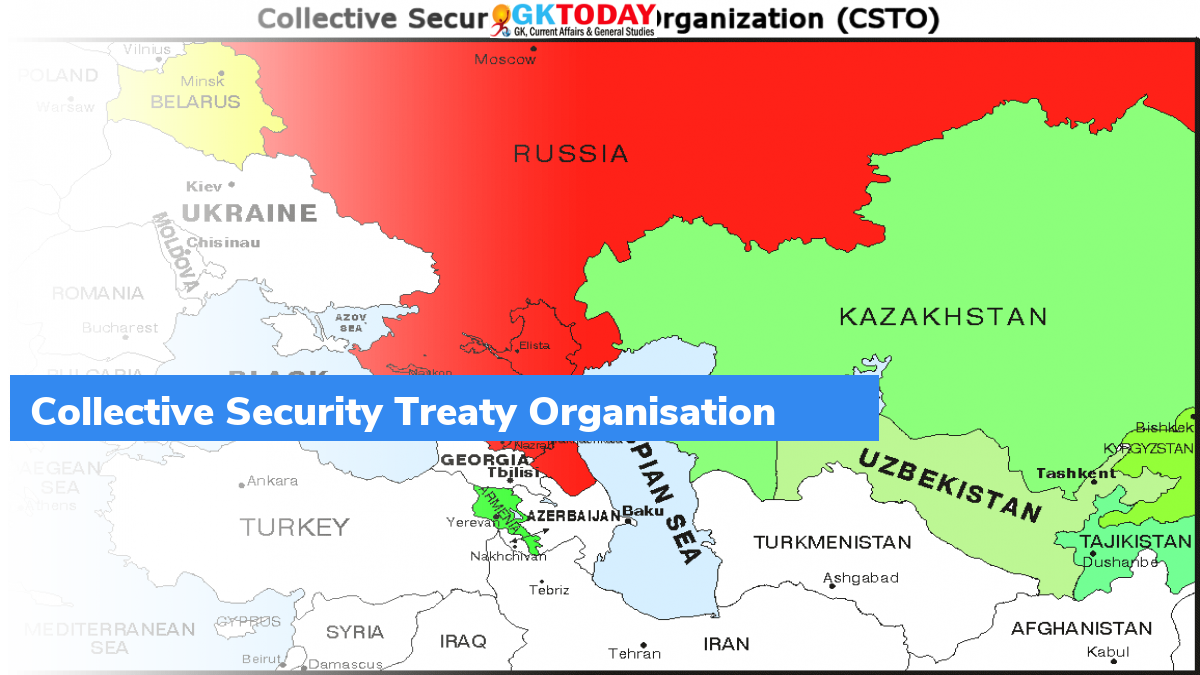What is ‘Collective Security Treaty Organisation (CSTO)’?
On January 6, 2022, Russian paratroopers and Belarusian special forces boarded planes for Almaty, which is one of the largest metropolises of Kazakhstan. The country has witnessed mass unrest in recent days, over government’s decision to do away with subsidies on liquefied petroleum gas.
What is the issue?
- The decision was taken three years back, but on January 1, 2022 the fuel prices became fully market-based.
- As a result, cost of LPG increased suddenly. It has doubles in some places from 60 tenge per litre in December 2021 to 120 tenge by January 2.
- Thus, protests broke out, immediately in Zhanaozen and spread across the Kazakhstan.
- When things became out of control, President of Kazakhstan, Kassym-Zhomart Tokayev, called on the Collective Security Treaty Organisation (CSTO) to curb the protests.
About Collective Security Treaty Organisation
Collective Security Treaty Organisation is a military alliance, comprising of six members namely, Kazakhstan, Kyrgyzstan, Armenia, Belarus, Tajikistan and Russia. Uzbekistan was also a member but it quit the organisation in 2012.
When was CSTO formed?
When the Cold War ended in 1991, the Warsaw Pact dissolved. Warsaw Pact was an alliance of eight socialist states and Soviet Union’s answer to NATO. Within a year, Russia and its five allies in Commonwealth of Independent States, signed a new Collective Security Treaty. This treaty came into force in 1994. In 2002 it declared itself as the Collective Security Treaty Organisation, when America had invaded Afghanistan.
Growth of CSTO
- Ambition of CSTO has grown over time. In 2007, it agreed to create a 3,600-strong peacekeeping force. In 2009, it established a rapid-reaction force consisting of 20,000 elite personnel who are kept on high alert.
- It has also held joint exercises, including some high-profile “anti-terrorism” drills in 2021, against growing chaos in Afghanistan.
- For the first time, CSTO invoked Article 4 in January 2022 to control the chaos in Kazakhstan. It is similar to NATO’s Article 5, which provides that response may include armed force, but it does not mandate it. NATO actually promises to take “such action as it deems necessary” for restoring and maintaining security.
Month: Current Affairs - January, 2022
Category: International / World Current Affairs








